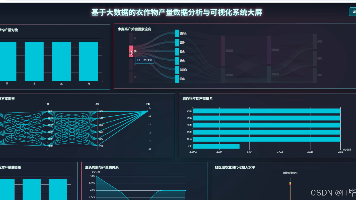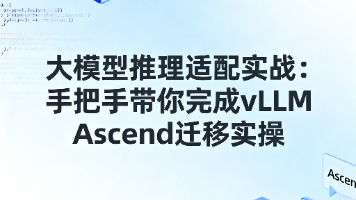给出数据结构中图的邻接矩阵,利用python+matplotlib绘图
一、简单使用示例输入参数主要包括:PointsName: 列表结构,表示图各个顶点的序号(用于标记注释)AdjacencyMatrix: 二维列表结构,表示图的邻接矩阵注:(设计时主要考虑的有向图,如果表示无向图,权值的标注需要改一下)if __name__ == '__main__':# 示例a = [1, 2, 3, 4]# 点的序号,用于标注b = [[0, 3, 0, 6], [1, 0,
·
一、简单使用示例
输入参数主要包括:
PointsName: 列表结构,表示图各个顶点的序号(用于标记注释)
AdjacencyMatrix: 二维列表结构,表示图的邻接矩阵
注:(设计时主要考虑的有向图,如果表示无向图,权值的标注需要改一下)
if __name__ == '__main__':
# 示例
a = [1, 2, 3, 4] # 点的序号,用于标注
b = [[0, 3, 0, 6], [1, 0, 1, 2], [0, 4, 0, 0], [2, 1, 0, 0]] # 邻接矩阵
AdjacencyMatrixToGraph(a, b)
运行结果:
二、主要函数
import matplotlib.pyplot as plt
import numpy as np
def AdjacencyMatrixToGraph(PointsName, AdjacencyMatrix):
"""
根据邻接矩阵绘制图结构
:param PointsName: 列表结构,表示图各个顶点的序号(用于标记注释)
:param AdjacencyMatrix: 二维列表结构,表示图的邻接矩阵
"""
num = len(PointsName)
fig = plt.figure()
ax = fig.add_subplot(111)
xlim = [-1.1, 1.1]
ylim = [-1.1, 1.1]
ax.set(xlim=xlim, ylim=ylim) # 初始化坐标系
theta = 2 * np.pi / num
x = []
y = []
for i in range(num):
x.append(np.cos(i * theta))
y.append(np.sin(i * theta)) # 分配点位
ax.scatter(x, y, color='b', marker='.')
for i in range(num):
ax.annotate(PointsName[i], (x[i], y[i])) # 绘制点并加标注
for i in range(num):
for j in range(num):
if AdjacencyMatrix[i][j]: # 如果有连线
x_temp = [x[i], x[j]]
y_temp = [y[i], y[j]]
x_text = (x_temp[0] * 2 + x_temp[1]) / 3
y_text = (y_temp[0] * 2 + y_temp[1]) / 3
if i == j:
x_text -= 0.05
y_text -= 0.05
ax.plot(x_temp, y_temp, linewidth=0.5, color='red')
ax.text(x_text, y_text, "W:"+str(AdjacencyMatrix[i][j])) # 连线加权注释
ax.axis('off') # 不显示坐标轴
plt.show()
三、原始代码
import matplotlib.pyplot as plt
import numpy as np
def AdjacencyMatrixToGraph(PointsName, AdjacencyMatrix):
"""
根据邻接矩阵绘制图结构
:param PointsName: 列表结构,表示图各个顶点的序号(用于标记注释)
:param AdjacencyMatrix: 二维列表结构,表示图的邻接矩阵
"""
num = len(PointsName)
fig = plt.figure()
ax = fig.add_subplot(111)
xlim = [-1.1, 1.1]
ylim = [-1.1, 1.1]
ax.set(xlim=xlim, ylim=ylim) # 初始化坐标系
theta = 2 * np.pi / num
x = []
y = []
for i in range(num):
x.append(np.cos(i * theta))
y.append(np.sin(i * theta)) # 分配点位
ax.scatter(x, y, color='b', marker='.')
for i in range(num):
ax.annotate(PointsName[i], (x[i], y[i])) # 绘制点并加标注
for i in range(num):
for j in range(num):
if AdjacencyMatrix[i][j]: # 如果有连线
x_temp = [x[i], x[j]]
y_temp = [y[i], y[j]]
x_text = (x_temp[0] * 2 + x_temp[1]) / 3
y_text = (y_temp[0] * 2 + y_temp[1]) / 3
if i == j:
x_text -= 0.05
y_text -= 0.05
ax.plot(x_temp, y_temp, linewidth=0.5, color='red')
ax.text(x_text, y_text, "W:"+str(AdjacencyMatrix[i][j])) # 连线加权注释
ax.axis('off') # 不显示坐标轴
plt.show()
if __name__ == '__main__':
# 示例
a = [1, 2, 3, 4] # 点的序号,用于标注
b = [[0, 3, 0, 6], [1, 0, 1, 2], [0, 4, 0, 0], [2, 1, 0, 0]] # 邻接矩阵
AdjacencyMatrixToGraph(a, b)

魔乐社区(Modelers.cn) 是一个中立、公益的人工智能社区,提供人工智能工具、模型、数据的托管、展示与应用协同服务,为人工智能开发及爱好者搭建开放的学习交流平台。社区通过理事会方式运作,由全产业链共同建设、共同运营、共同享有,推动国产AI生态繁荣发展。
更多推荐
 已为社区贡献1条内容
已为社区贡献1条内容








所有评论(0)